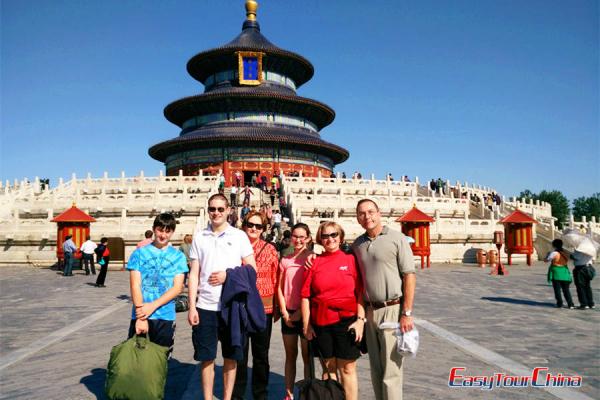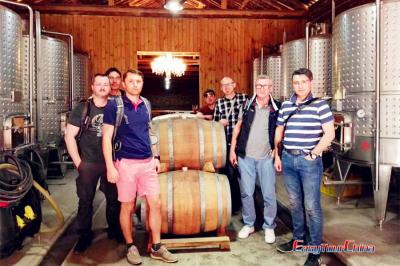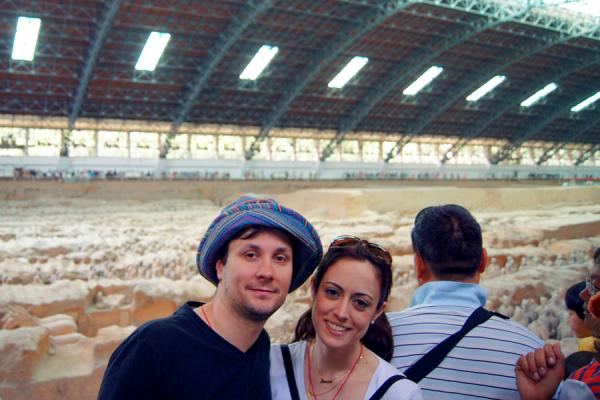Beijing National Stadium (Bird's Nest)
Beijing National Stadium Facts
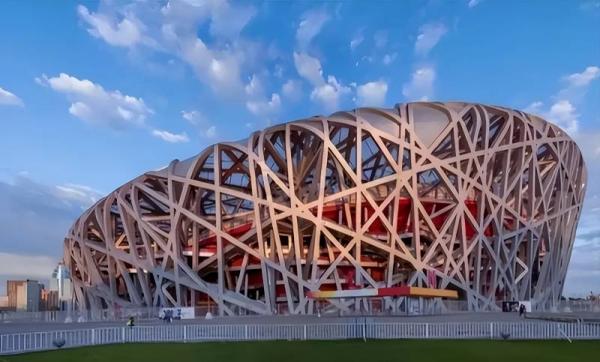
History of the Bird’s Nest in Beijing
The construction of the Bird's Nest in Beijing, China originated from an announcement. In October 2002, Beijing Municipality launched a global solicitation for design proposals for the main stadium of the 2008 Olympic Games, marking the first Olympic venue to commence the design process. After prequalification and formal competition, 14 domestic and international teams were ultimately shortlisted. In March 2003, 13 proposals were finally submitted. An evaluation panel comprising 13 Chinese and foreign experts selected three outstanding proposals after two rounds of voting. Subsequently, all the proposals were publicly exhibited in Beijing. The Bird's Nest for Beijing National Stadium, designed by a team from Herzog & De Meuron of Switzerland in collaboration with a Chinese institute, stood out by ranking first in both public voting and expert evaluation. Hence, it was ultimately determined to be the main stadium for the 2008 Beijing Olympic Games.Origin of Its Name
The most striking feature of the Bird's Nest in Beijing is its unique appearance. The components of the entire stadium structure support each other, forming a grid-like framework. The stadium's skeleton is composed of 12,000 steel beams, creating a net-like structure resembling a bird's nest, hence its name.When Was the Beijing National Stadium Built
The construction of the Bird's Nest in Beijing began on December 24, 2003. After more than two years of construction, the Bird's Nest project of the Beijing National Stadium completed the final stage of steel structure construction—integral unloading—on September 17, 2006. On June 28, 2008, the Bird's Nest for the Beijing Olympics, woven from light gray steel structures, was declared completed.
Recommended Beijing Tour Packages:
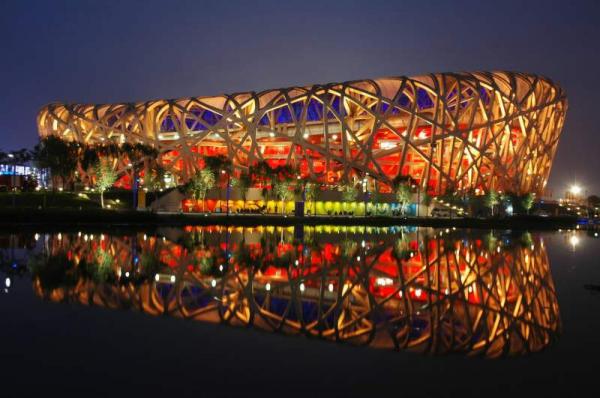
Beijing National Stadium Architecture
The Beijing National Stadium is located at the center of the Olympic Park complex, situated on a slightly elevated terrain. It resembles a vast container. The undulating base softens the mass of the container and gives it a dramatic curved appearance. While meeting all the functional and technical requirements of an Olympic stadium, the design is not dominated by similar overly technical features such as large-span structures and digital screens.Design Inspiration and Concept
The Beijing National Stadium (Bird’s Nest) was designed jointly by Herzog & De Meuron, Arup Sport, and the China Architecture Design and Research Group. The design inspiration of it originated from the intricate woven structure of a bird's nest in nature. This idea struck a chord with both the Chinese public and the international community. With united efforts, the architects successfully turned the concept of a bird's nest into an architectural marvel.Besides, the construction of the Beijing Bird’s Nest Stadium follows the principles of Green Olympics, High-tech Olympics, and People’s Olympics. From the initial design to its refinement, the stadium was guided by the principles of frugality and sustainable development for the Olympics. It struck a balance between permanent and temporary facilities while fulfilling Olympic functional requirements.Also, the Bird’s Nest in Beijing embodies the modernity and technological advancement of Olympic venues, making it a window to show China's high-tech achievements and innovative strength. Furthermore, the design of the stadium fully reflects humanistic care. The bowl-shaped seats embrace the stadium's converged structure, with a staggered layout between the upper and lower levels.Structure of the National Stadium
The entire building of the Beijing Bird’s Nest is connected through a giant Disney-style mesh structure, with not a single supporting column inside. Its gray, mineral-like steel mesh is covered with transparent membrane material, enclosing an earthy red, bowl-shaped stadium stand. Here, the hollow-out techniques, ceramic patterns, and the warmth of the red color in traditional Chinese culture are perfectly integrated with the most advanced modern steel structure design.The External Structure
The external structure of the Beijing National Stadium (Bird's Nest) is mainly composed of massive gantry steel frames, totaling 24 truss columns. The main building of the project is spatially saddle-shaped and ellipsoidal, with a north-south length of 333 meters. It features a massive spatial saddle-shaped steel truss structure, with a total steel consumption of 42,000 tons.The Concrete Stands
The concrete stands of the Beijing Bird’s Nest are divided into three levels: upper, middle, and lower. The stands' concrete structure includes one underground story and seven above-ground stories. It is a reinforced concrete frame-shear wall structural system. The steel structure is separate from the upper part of the concrete stands. Both structures rest on a connected base plate.The Roof
The roof steel structure of the Beijing Bird’s Nest National Stadium is covered with a double-layer membrane structure. The upper layer is a transparent ETFE membrane fixed between the upper chords of the steel structure. While the lower layer is a translucent PTFE acoustic ceiling fixed below the lower chords and on the side walls of the inner ring.
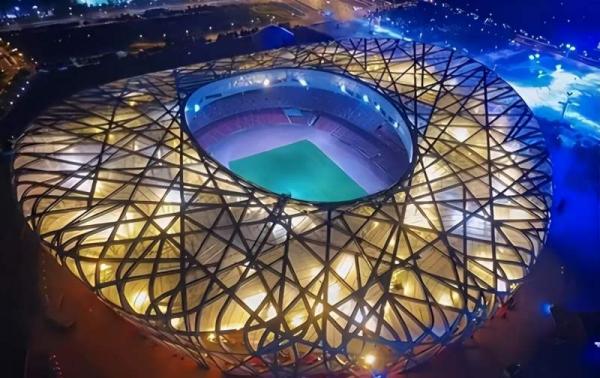
Beijing Bird’s Nest Stadium Now
Since October 2008, after the conclusion of the Olympic Games, the Bird’s Nest in Beijing has been opened to the public as a tourist attraction. Today, it has become a large professional venue for international and domestic sports competitions and recreational activities, and many singers hold concerts at Beijing National Stadium. Besides, it is also a landmark sports building and a legacy of the Olympics as well as a window to learn more about China, which makes it a must-visit attraction during your tour Beijing city tour.Bird's Nest Happy Ice and Snow Season Gala
Happy Ice and Snow Season Gala is held at the Beijing Bird’s Nest every year, which is a landmark national fitness event officially opened to the public starting on December 30, 2023. When winter comes, Beijing National Stadium has been turned into a winter ice and snow theme park that integrates viewing, snow play, ice activities, and skiing, making your tour of Beijing full of fun.This gala at the Beijing Bird’s Nest National Stadium offers over 30 kinds of sports and entertainment activities for visitors to participate in, including ski jumping, ice skating, sledding, bumper cars on ice, and many more. Additionally, children can enjoy themselves by participating in some indoor activities in the Children's Area, such as canoeing, fencing, and equestrianism. The ticket price is 120 yuan on weekdays and 160 yuan on weekends and public holidays.How to Tour Bird’s Nest in Beijing
To tour this attraction, you can take stunning photos of Beijing National Stadium from the outside, and never miss the breathtaking night view when the lights are on. Then, go to the 5th floor to marvel at the steel structure. Finally, head to the 6th floor to the rooftop to enjoy the beautiful Beijing skyline. Afterward, you can visit the Water Cube nearby, which echoes the Beijing Bird’s Nest in layouts and is also an important landmark building of the Beijing Olympic Games.
>> Related Reading: Walking on the Air Corridor of Bird’s Nest to Overlook Beijing City
How to Get to Bird’s Nest in Beijing
By Subway
The Beijing National Stadium (Bird’s Nest) is located in the Chaoyang District of Beijing, and the most convenient way to get there is by taking the subway. If you find yourself in attractions like Forbidden City or Temple of Heaven, you can take Subway Line 8 to Olympic Park Station and exit from Exit D; or you can get off at Olympic Sports Center Station and get out from Exit B1 or B2. The Beijing National Stadium is within 5 minutes’ walk.If you are in other parts of Beijing, you can take Subway Line 2, 13, or 5 and switch to Line 8 and get off at Olympic Park Station or Olympic Sports Center Station, then walk to the Bird’s Nest in Beijing.
By Bus
Bus services are also available in Beijing. If you prefer bus travel, you can take buses No. 82, 418, or 538 and get off at National Stadium East Station, then walk for 5 minutes and you’ll arrive at the Bird’s Nest in Beijing.By Taxi
You can also take a taxi from any part of Beijing to the Beijing National Stadium. The starting fare for a taxi in Beijing is 13 yuan for trips within 3 kilometers and 2.3 yuan per kilometer for distances exceeding 3 kilometers. By the way, you can use ride-hailing services, which will be cheaper.
>> Keep reading: Beijing Travel Tips
Explore Bird’s Nest in Beijing with Easy Tour China
To gain a better travel experience and have a great time at the Bird’s Nest Stadium in Beijing, you can tour with a professional travel agency like Easy Tour China. With 24 years of expertise in serving global customers, we offer expertly customized China tours for you to suit your pace and requirement and arrange transport, ticket, and dining according to your preference.
More Attractions in Beijing:
